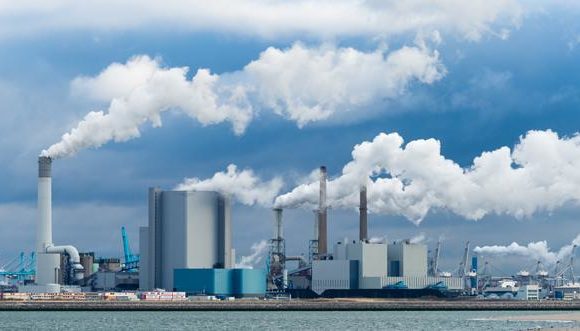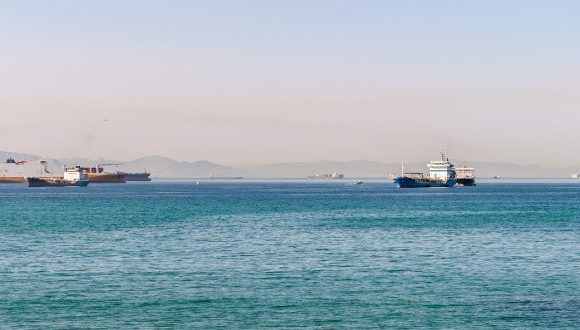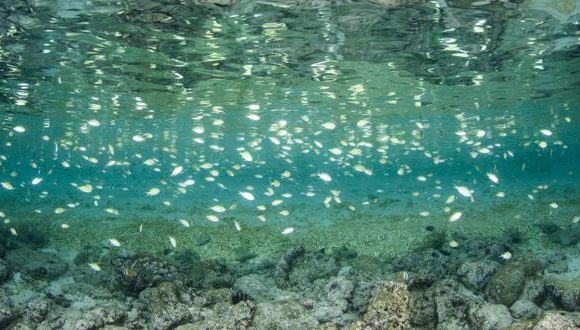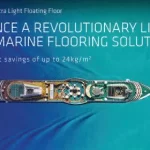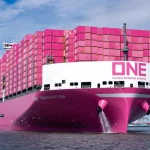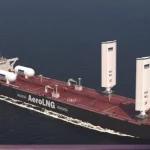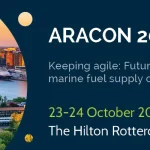The Rise of Ocean-Friendly Packaging: Brands Leading the Way
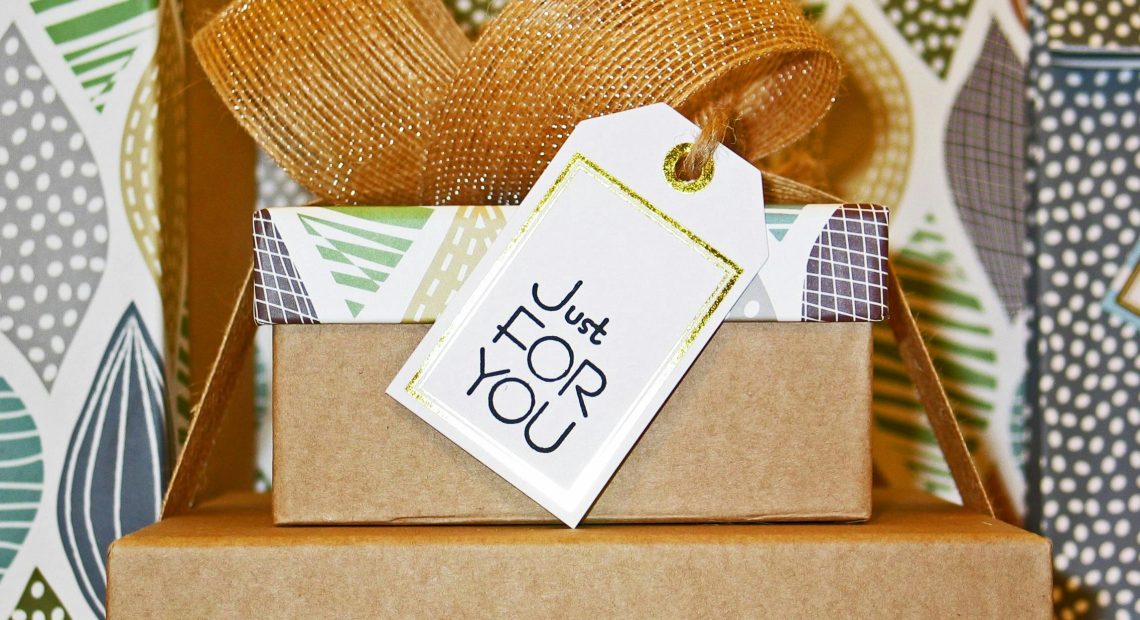
Our oceans are facing a huge crisis with over 350 million tonnes of plastic waste every year. Landfills are full, and our seas are in danger. The packaging industry must change in a big way.
The move to ocean-friendly packaging is a big step for companies. It’s not just about doing the right thing; it’s also good for business. A study by Trivium Packaging shows 74% of people are willing to pay more for eco-friendly products.
Many things are driving this change. People are more aware of plastic pollution thanks to social media. Laws in the UK and Europe are also pushing for sustainable materials and better design.
New technologies are making it possible to use different materials. We now have things like seaweed and mushroom packaging instead of plastic.
Companies in the maritime sector are leading the way. They show that caring for our oceans and making money can go hand in hand.
Key Takeaways
- Global plastic waste exceeds 350 million tonnes annually, creating urgent demand for packaging alternatives
- Nearly three-quarters of consumers willingly pay more for environmentally responsible packaging
- The convergence of consumer awareness, regulatory pressure and technological innovation drives industry transformation
- Leading brands now view sustainable packaging as both environmental responsibility and business opportunity
- Circular economy principles increasingly influence packaging design and material selection
- The UK maritime sector is witnessing significant adoption of ocean-conscious packaging solutions
Understanding Ocean-Friendly Packaging
Ocean pollution is a big problem, and it’s making us look for new packaging solutions. These solutions aim to protect marine life. More and more people want to buy products that don’t harm the environment.
But what does “ocean-friendly” really mean? And why is it so important?
Ocean-friendly packaging is more than just being green. It’s about the whole life cycle of packaging. From making it to throwing it away, it all matters. This way, we can really help our oceans.
Definition and Importance
Ocean-friendly packaging is made to not harm the sea. Unlike old packaging that stays in the ocean for ages, these new ones are safe for the sea life.
Good ocean-friendly packaging has to meet some key points:
- It breaks down in the sea without harming it
- It’s made with less carbon and travels less
- It can be recycled or composted easily
- It uses less material and is lighter
- It’s safe for sea creatures if they eat it by mistake
Switching to ocean-friendly packaging is very important. Old packaging, like plastic bags, pollutes our oceans a lot. It turns into tiny pieces that sea creatures eat, and we end up eating them too.
“The best packaging is the kind that never becomes waste. This is the real goal for keeping our oceans safe.”
Choosing ocean-friendly packaging also helps businesses. They get a better reputation, happier customers, and are ready for new rules. In the UK, where people care a lot about packaging, being green can really help a brand stand out.
Green packaging also fits with bigger plans to be more sustainable. It helps businesses use resources better and reduce waste. This is good for the planet and for business.
It’s important to know the difference between just being green and being ocean-friendly. Some green packaging might not break down in the sea. Ocean-friendly packaging must safely break down in seawater or be caught before it gets to the sea.
As we learn more about how to protect the sea, what we call ocean-friendly packaging might change. But one thing is clear: we need to find ways to keep our oceans safe and our products intact.
The Environmental Impact of Conventional Packaging
The harm caused by traditional packaging is growing fast, affecting our oceans and marine life. This problem is linked to how we produce and use packaging. It’s vital to find plastic-free solutions to fix this damage.
Single-use plastics are everywhere, but they harm our planet a lot. Their convenience comes at a big cost to our environment. We’re only starting to understand this.
Statistics on Ocean Pollution
Ocean pollution is a big issue. Every year, 8 million tonnes of plastic waste go into our oceans. That’s like dumping a truck of plastic into the sea every minute. By 2050, our oceans might have more plastic than fish.
In the UK, most people are worried about packaging waste in the sea. This worry is real, as studies found microplastics in all British coastal water samples.

Plastic pollution is not spread out evenly. Five big garbage patches exist worldwide, with the largest being three times the size of France. These patches show how long packaging stays in the sea.
Plastic lasts a long time in the ocean. A plastic bottle can take 450 years to break down. Fishing line can last up to 600 years. Even when they break down, they turn into microplastics.
“The scale of plastic pollution in our oceans represents one of the most serious environmental challenges of our time. What we’re witnessing is not just an aesthetic problem, but a fundamental threat to marine ecosystems and potentially to human health.”
How Plastic Affects Marine Life
Plastic packaging harms marine life in many ways. Large pieces of plastic can hurt animals directly. Microplastics are more dangerous, affecting food webs.
Many animals get trapped in packaging waste. Over 700 species, like sea turtles and seabirds, suffer from this. It can cause injuries and even death.
Plastic is also eaten by marine animals. Seabirds mistake it for food, and sea turtles think plastic bags are jellyfish. This can block their stomachs and make them starve.
The marine life protection issue goes down to tiny levels. Microplastics are everywhere in the ocean. They soak up toxins, which then move up the food chain.
Coral reefs are also affected. Climate change and plastic pollution stress them out. Studies show corals near plastic have a 20-fold risk of disease.
Chemicals from plastics can harm marine life. As plastics break down, they release harmful chemicals. These can affect animals’ hormones, affecting their growth and reproduction.
Different packaging materials have different impacts. Plastic is the biggest problem, but even “biodegradable” materials may not break down in the sea. We need to find real solutions, not just replace one problem with another.
Marine ecosystems are connected. Damage to one part can harm the whole system. Understanding this helps us see why we need plastic-free solutions and ocean-friendly packaging.
Prominent Brands Embracing Ocean-Friendly Practices
Many brands are now using eco-friendly packaging to cut down on marine pollution. They’re not just listening to what customers want. They’re leading the way with new solutions that could change the whole industry. This shows that caring for the planet and doing well in business can go together.
Switching to sustainable packaging is a big step for brands around the world. The leaders are finding that being kind to the ocean helps their reputation, sparks new ideas, and can even save money. Their stories offer useful tips for others wanting to follow suit.

Examples of Leading Companies
Big names like Unilever are making big promises to change their packaging. They want to cut their use of new plastics by half by 2025. They aim to make all their packaging reusable, recyclable, or compostable.
Coca-Cola is also making big moves. They want to make all their packaging recyclable by 2025. They’re also aiming to use 50% recycled materials in their packaging by 2030. Their “World Without Waste” plan is a big step for the drink industry.
Patagonia is a leader in environmental action. They use 100% recycled materials for their packaging. They also encourage customers to recycle their old gear through the “Worn Wear” programme.
“Businesses must be part of the solution to our environmental challenges. We’ve found that embracing ocean-friendly packaging isn’t just good for the planet—it’s good for business too.”
Even smaller brands are making a big difference. Lush Cosmetics has introduced “naked” packaging for many products. This means no plastic wrapping for things like shampoo bars and bath bombs, saving millions of bottles from the trash.
In the UK, Riverford Organic Farmers delivers food in packaging that can be returned or composted. They show how small businesses can make a big impact. They also teach customers how to dispose of packaging properly, making their efforts even more effective.
Case Studies of Successful Initiatives
Procter & Gamble has teamed up with TerraCycle to create a recyclable shampoo bottle from beach plastic. These bottles contain up to 25% recycled plastic, helping to clean up the oceans. This project also raised awareness about plastic waste.
This effort collected plastic from beaches in Europe and turned it into over 170,000 bottles. It shows that using ocean plastic in packaging is not only possible but also profitable. It’s inspired others in the industry to follow suit.
Evian is another example of success. They’ve worked on recycling technologies and made their bottles 100% recyclable. They’ve partnered with Loop Industries to recycle all PET waste into new plastic for food packaging.
Evian’s efforts are part of a bigger plan to be carbon neutral. They aim to use only recycled plastic for their bottles by 2025. This shows how packaging can be part of a bigger sustainability plan.
- Reduced material usage by 20-40% through redesigned packaging
- Decreased shipping weights, lowering transport emissions
- Improved consumer perception and brand loyalty
- Developed new revenue streams through innovative solutions
- Created industry partnerships advancing collective progress
These examples show that using eco-friendly packaging is good for business. Brands that do this often find benefits like saving money and gaining customer loyalty. It’s a chance for companies to stand out and do something good for the planet.
What’s great about these stories is that they can be followed by others. The lessons learned by these brands can help many others. Whether it’s through new materials, changing supply chains, or teaching customers, these companies have shown it’s possible to make a difference.
Innovative Materials for Sustainable Packaging
The world of ocean-friendly packaging is growing fast. New materials are being made to protect products and the sea. These sustainable materials are changing how companies package their goods. They offer green alternatives that don’t harm the ocean.
Biodegradable Options
Biodegradable packaging is a big step against ocean pollution. Unlike old plastics, these materials break down quickly in the sea. This cuts down their harm to the environment.
Notpla is leading the way with edible, biodegradable packaging made from seaweed. They’ve made sachets and water pods that disappear in weeks. At big events, these pods have replaced thousands of plastic bottles, showing they work well.
Ecovative uses mycelium, the mushroom’s root, to make packaging. This material is strong and breaks down in 45 days. It’s a great alternative to polystyrene.
Tipa has created flexible packaging that’s like plastic but composts in months. It’s good for food and clothes, which need to stay fresh and be seen through.
“The most exciting aspect of these biodegradable innovations isn’t just their environmental benefit, but their ability to match or exceed the performance of traditional materials in protecting products,” notes Dr. Emma Richardson, materials scientist at University College London.
Plant-Based Materials
Plants are a goldmine for sustainable packaging. They use renewable resources and need less energy than plastics. This makes them better for the planet.
Seaweed is a great material for packaging. Companies like Evoware make food wrappings that dissolve in hot water or can be eaten. This solves two big problems at once.
Hemp fibres are strong and versatile. Mixed with recycled content, they make packaging as tough as plastic but biodegradable. Hempcrete is leading the way in protecting fragile items without plastic.
Waste from farming is being turned into packaging. Bagasse, corn husks, and wheat straw make strong containers for food and electronics. They need little processing and enrich the soil when composted.
These plant-based materials are getting better all the time. They now offer water resistance, keep things warm or cool, and protect against impacts. The best part is they turn into nutrients for new growth.
Hybrid materials are also exciting. Mixing seaweed with paper fibres creates packaging that’s strong but biodegradable. These new materials show that you can have both strength and sustainability.
Consumer Awareness and Demand
Eco-conscious consumerism is changing how brands package their products. Environmental concerns are now a big deal for everyone, not just a few. This means companies must think carefully about their packaging to keep customers happy.
This change is big for businesses. Being green is now a key advantage, not just a nice thing to do.
Trends in Eco-Conscious Consumerism
Today’s shoppers are more aware and care about the planet. 30% of shoppers look at environmental impact ratings before buying. This shows brands can’t ignore these customers.
In Europe, like Germany, more people choose products with less packaging. This shows a big shift in what people want to buy. It’s all about using resources wisely, like the circular economy idea.
Younger people, like Millennials and Generation Z, really want sustainable products. They’re even willing to pay more for them. But, more and more people of all ages are worried about plastic in the ocean.
Thanks to social media, brands are under more pressure to use green packaging. When people see posts about too much packaging or plastic in the ocean, companies quickly respond. This has made green packaging more common across different industries.
The Role of Education in Promoting Change
Even though more people know about green packaging, there’s a lot they don’t understand. In the UK, many struggle to know which packaging is best. This makes it hard for them to choose eco-friendly options.
Brands, NGOs, and governments are working to teach people about packaging. Clear labels and information help people make better choices. When they know how packaging is made and used, they feel more connected to the environment.
“Consumer education isn’t just about promoting a brand’s green credentials; it’s about empowering people to make informed choices that collectively drive industry-wide change.”
Being open about packaging is key to winning trust. Brands that share details about their packaging and how it’s made are more believable. This can include QR codes or labels from trusted groups.
Campaigns that show how packaging affects the ocean are very effective. Seeing the impact of their choices makes people want to change. This emotional connection is stronger than just knowing it’s good for the planet.
Understanding what consumers want helps businesses make better choices. The best brands see education and awareness as tools to help them. They use these to make their packaging more sustainable.
Regulations and Policies Around Packaging
In recent years, the UK and global authorities have introduced significant legislation aimed at reducing packaging waste and protecting marine ecosystems. These regulatory frameworks are reshaping how businesses approach packaging design, material selection, and waste management. With Europeans generating an average of 180kg of packaging waste per person annually, the urgency for effective policy intervention has never been greater.
Overview of UK Legislation
The UK government’s Resources and Waste Strategy represents a cornerstone of national efforts to combat packaging waste. Introduced in 2018, this plan outlines a vision for minimising waste, promoting resource efficiency, and moving towards a more circular economy.
A key component of the UK’s regulatory approach is the Plastic Packaging Tax, which came into effect in April 2022. This tax imposes a £200 per tonne levy on plastic packaging containing less than 30% recycled content, creating a strong financial incentive for businesses to incorporate recycled materials into their packaging solutions.
The UK is also implementing an Extended Producer Responsibility (EPR) scheme, fundamentally changing how packaging waste is managed. Under this framework, producers bear the full cost of managing the packaging they place on the market, encouraging more sustainable design choices and investment in ocean-friendly packaging alternatives.
“The UK’s regulatory approach aims to create a system where producers take responsibility for the environmental impact of their packaging throughout its entire lifecycle.”
Looking ahead, the UK government has signalled intentions to introduce additional measures, including a Deposit Return Scheme for beverage containers and mandatory recycling labelling, further strengthening the push towards plastic-free solutions in the packaging industry.
The Impact of Global Agreements
The UK’s regulatory landscape operates within a broader context of international commitments and global agreements. The EU’s Single-Use Plastics Directive, which banned certain single-use plastic items in 2023, continues to influence UK practices despite Brexit, for businesses operating across European markets.
The ongoing negotiations for a UN Global Plastics Treaty represent perhaps the most ambitious international effort to date. This legally binding agreement aims to address the full lifecycle of plastics, from production to waste management, with significant implications for packaging standards worldwide.
Recent amendments to the Basel Convention have also tightened controls on the transboundary movement of plastic waste, limiting the ability of developed nations to export their packaging waste to countries with less robust waste management infrastructure.
For UK businesses, these overlapping regulatory frameworks create both challenges and opportunities. Compliance requirements are becoming increasingly complex, with different reporting obligations across markets and possible financial penalties for non-compliance.
- Mandatory packaging waste reporting
- Material restrictions and bans
- Recycled content requirements
- Extended producer responsibility fees
- Labelling and consumer information standards
Forward-thinking companies are going beyond mere compliance, anticipating future regulatory developments by investing in ocean-friendly packaging innovations today. This proactive approach not only mitigates regulatory risk but also builds brand reputation and consumer trust in an increasingly eco-conscious marketplace.
As regulations continue to evolve, businesses that embrace the transition to sustainable packaging solutions will find themselves better positioned to navigate the changing policy landscape while contributing to the vital work of protecting our oceans from packaging pollution.
Challenges in Adopting Ocean-Friendly Packaging
Organisations face big hurdles when they try to use ocean-friendly packaging. The benefits for the environment are clear, but there are practical issues. These issues can slow down the process and affect success.
Switching to ocean-friendly options needs careful thought. Companies must think about money and logistics. They also need to keep their operations running smoothly and make customers happy.
Cost Implications
The biggest problem is the price premium for sustainable materials. The Sustainable Packaging Coalition (2022) says biodegradable packaging costs 10-20% more than plastic. This can hurt profit margins, mainly for small businesses with tight budgets.
Brands face a tough choice: pay more for sustainable packaging or raise prices and lose customers. Some brands are slowly changing their packaging. They explain the environmental benefits to customers, who are willing to pay a bit more.
To deal with these costs, businesses can try a few things. Making more packaging can lower costs. Designing packaging to use less material is another way. Finding cheaper alternatives that are good for the environment is also possible.
Supply Chain Considerations
The supply chain is another big challenge. Finding reliable sources of sustainable materials is hard. The networks for these materials are not as developed as those for plastic.
Changing manufacturing processes to use new materials is also a challenge. Businesses need to update equipment, train staff, and check quality. This ensures the packaging works well.
There’s also a problem with what happens to packaging at the end. The WWF (2021) says only 9% of plastics are recycled. This shows a gap between new packaging ideas and how to deal with waste. Even compostable packaging often ends up in landfills because of sorting issues and confusion about how to dispose of it.
To tackle these issues, companies are taking things slowly. They test and improve before fully switching. Building strong relationships with suppliers is key. This helps with innovation and solving problems in the supply chain.
Teaching customers how to dispose of packaging properly is also important. Even the best packaging won’t help the environment if it’s not disposed of correctly. Brands need to clearly explain how to handle it.
These challenges are big, but they can be overcome. With the right planning, investment, and teamwork, businesses can make the switch to better packaging. This will help them and the oceans.
Future Trends in Packaging Sustainability
The future of packaging looks bright for our oceans. New technologies will change how we get products, keeping our seas safe. Brands are now taking steps to protect the environment, leading to big changes in packaging.
The market for green packaging is growing fast. It was worth $101.49 billion in 2022 and is expected to double by 2032. This shows a big shift in how companies design and use packaging.
Predictions for Eco-Friendly Innovations
Material science is leading the way in packaging. Advanced biopolymers made from plants and sea algae are very promising. They work like plastics but break down safely in the sea.
Plastics that break down in saltwater are being developed quickly. This could be a game-changer for coastal areas, making sure waste doesn’t harm the ocean.
Reusable packaging could be 20% of the market by 2030. This could cut plastic waste by half. It’s a big change from using packaging that’s thrown away after use.
New materials do more than just protect things. They can also fight germs or keep things fresh longer. These materials are thinner and lighter but just as good at their job.
“The next decade will see more innovation in packaging sustainability than the previous fifty years combined. Brands that invest now will not only protect oceans but gain significant competitive advantage.”
The Role of Technology in Packaging Solutions
Digital tech is making packaging better for the planet. Blockchain solutions make it clear where packaging comes from. This builds trust and encourages companies to be more responsible.
Artificial intelligence is changing how we design packaging. AI can make packaging that uses 30% less material but is just as good. This is a big step forward for using recycled materials.
Smart packaging uses sensors to keep products fresh longer. It can tell when something needs to be kept cold or is about to go bad. This helps reduce waste and saves resources.
New business models are also changing the packaging world. Companies are starting to lease packaging instead of buying it. This encourages recycling and reuse.
- Closed-loop systems where packaging materials cycle continuously between manufacturers and consumers
- Collaborative industry platforms sharing sustainable packaging innovations across sectors
- Decentralised production networks reducing transport emissions through localised packaging creation
- Consumer-enabled recycling programmes leveraging mobile technology for improved waste sorting
- Biomimetic designs inspired by natural structures for maximum strength with minimal materials
These changes will happen at different times. Soon, we’ll see more use of plant-based materials and better recycling. In a few years, we’ll have self-degrading plastics and packaging that’s verified by blockchain.
Looking further ahead, we might have packaging that changes on its own and systems that use no waste. These ideas might take 8-10 years to become common.
For companies, these changes are both a challenge and an opportunity. By keeping up with these trends, brands can make smart choices that help the environment and meet customer needs.
Collaborations and Initiatives Supporting Change
Collaboration is key to solving ocean pollution. No single group can tackle these big challenges alone. In the UK and worldwide, companies, green groups, and governments are working together. They all want to protect our oceans.
These partnerships are speeding up the development of eco-friendly packaging. They share knowledge, costs, and risks. This way, they can overcome obstacles and move towards a circular economy faster.
Partnerships Between Brands and Environmental NGOs
Brands and green groups teaming up is very effective. They use each other’s strengths. Brands have resources and reach, while NGOs have ecological knowledge and trust.
Loop is a great example. It works with big names like Nestlé and Procter & Gamble. They offer products in reusable containers. This cuts down on single-use waste but keeps shopping easy.
The Marine Conservation Society works with UK shops on beach clean-ups. They also collect data on packaging waste. This helps brands see how their packaging affects the environment and often leads to changes.
Surfers Against Sewage teams up with companies for more than just money. They work on campaigns and product challenges together. This mix of environmental passion and business power leads to new ideas.
“The most successful partnerships we’ve seen combine complementary strengths—brands bring scale and resources, while NGOs contribute credibility and ecological expertise. Together, they can achieve what neither could accomplish alone.”
Collective Efforts for a Sustainable Future
There are also big, collective efforts for change. These involve many groups working together. They set standards, share research, and act across industries.
The UK Plastics Pact is a big example. It includes companies that make most of the plastic packaging in UK supermarkets. They aim to make all packaging reusable, recyclable, or compostable by 2025. This needs everyone to work together on solutions.
The Ellen MacArthur Foundation’s New Plastics Economy is another big effort. It focuses on zero waste initiatives through circular design. Their challenges have led to new packaging ideas that might not have been developed without teamwork.
There are also alliances for specific sectors. The Sustainable Packaging Coalition brings together companies to improve packaging. They create guidelines and tools to help make packaging more sustainable without losing product protection or convenience.
These efforts use good governance to ensure everyone is involved and accountable. They have clear funding and impact assessments to show progress and where to focus next.
For companies looking to join, consider a few things:
- Is it aligned with your business goals and sustainability plans?
- Does it match your expertise with others?
- Is the governance clear and fair?
- Are there clear ways to measure success?
- Does it benefit everyone involved?
The best partnerships balance big environmental goals with what’s practical for businesses. By understanding both, they create solutions that can grow and work well in different markets and supply chains.
Local Initiatives in the UK Promoting Change
In the UK, local efforts are changing the game for sustainable packaging. These community projects are finding practical solutions to marine pollution. They act as test beds for ideas that could change the country.
Over 7 in 10 UK consumers worry about packaging waste. This has sparked action across the nation. The UK government’s plans to cut packaging waste are getting a boost from these local efforts.
The government’s strategy aims for a more efficient future. But it’s local communities that make this vision real. They show that big change can come from small actions, not just big budgets or global deals.
Community Projects and Campaigns
In the UK, community projects are changing how businesses package their products. Places like Penzance in Cornwall have become plastic-free. They set rules for businesses to ditch single-use plastics and use sustainable options instead.
Community refill stations are another big movement. With over 280 shops across the UK, people can buy items without packaging. The Refill campaign helps find places to refill water bottles and other items for free.
Local schemes to take back packaging are also working well. In Brighton, the Plastic Free Pantry reuses packaging. In Bristol, leftover paint is collected and given away. These systems show how communities can close the loop on packaging.
Local authorities are key in supporting these efforts. They help with policies, funding, and infrastructure. Devon County Council, for example, has a waste reduction strategy that includes community projects. This partnership is driving sustainable change.
Grassroots Movements and Their Impact
Grassroots movements in the UK are changing how we think about packaging. Groups like Surfers Against Sewage clean beaches and document packaging waste. This data pushes companies to be more responsible.
Citizen science projects are also making a difference. The Marine Conservation Society’s Great British Beach Clean gathers volunteers to collect and analyse waste. This data has led to policy changes, like the plastic bag charge.
Education programmes are teaching people about packaging. Kids Against Plastic, founded by two sisters, has educated thousands. These programmes are shaping a new generation of consumers who want better packaging.
“The most effective change happens when communities come together to solve local problems with local solutions. These grassroots movements are the true pioneers of sustainable packaging innovation.”
National brands are now working with these local movements. Companies like Waitrose and Marks & Spencer are supporting community refill schemes and beach clean-ups. This helps them test new packaging ideas in real-world settings.
These local efforts are having a big impact beyond their areas. They’ve inspired changes in policies across the country. This shows how community action can lead to big changes in how we package things and protect our oceans.
Measuring Success in Ocean-Friendly Initiatives
Measuring success in ocean-friendly packaging is key. Brands invest a lot in sustainable packaging. They need strong ways to show their efforts are working.
Going towards a circular economy means setting clear goals. The Ellen MacArthur Foundation says reusable packaging could be 20% of the market by 2030. This could cut plastic waste by 50%. But, we need to track progress well.
Metrics for Assessing Impact
Good ocean-friendly packaging needs both numbers and stories. Companies use detailed ways to measure their impact.
Numbers show how far we’ve come. They include:
- Plastic reduction volumes – how much less plastic is used
- Ocean plastic leakage prevention – how much plastic stays out of the sea
- Carbon footprint comparisons – how much less carbon is released
- Lifecycle assessment results – the whole environmental impact from start to finish
- Water usage reduction – how much water is saved
But, we also need to understand the stories behind the numbers:
- Ecosystem health markers – how marine environments are improving
- Stakeholder perception shifts – how people’s views are changing
- Policy influence outcomes – how these efforts shape laws
- Supply chain engagement – how suppliers are getting involved
Big names like Unilever, Coca-Cola, and Patagonia use scorecards. These scorecards help them track progress and share it with others.
Lessons Learned from Early Adopters
First movers in ocean-friendly packaging have shared important lessons. These lessons help others start their journey.
Starting small is smart. Patagonia suggests focusing on easy wins first. This builds momentum and prepares for bigger challenges.
Working with others is key. Brands that team up with suppliers, customers, and rivals make faster progress. Coca-Cola’s teamwork led to new plant-based materials.
“Measurement isn’t just about tracking progress—it’s about creating a feedback loop that drives continuous improvement in our packaging solutions. What gets measured truly does get managed.”
Overcoming technical challenges is a big learning experience. Companies learned that biodegradable materials need careful testing. Now, they test thoroughly before using new packaging.
There are also surprises. Companies find that going green can boost their image, keep customers loyal, and even save money. These benefits make the effort worthwhile.
Telling the story of packaging success is important. Different people want to hear different things. Consumers like simple facts, while investors and regulators need more detail. A good story for everyone helps.
By using these methods and learning from others, brands can make a big difference. The journey to a circular economy is clearer with good metrics and experience from the front-runners.
Conclusion: The Path Forward for Brands
The move to ocean-friendly packaging is both a must for the planet and a chance for businesses to grow. Brands from all fields are leading the way. They’re finding ways to protect our oceans while also meeting what customers want.
The Importance of Continued Innovation
Innovation in materials and design is key for the future of packaging. In 2020, startups got £650 million to work on sustainable packaging. This money is helping to create new, eco-friendly options that work just as well as old ones.
Brands that team up with universities and scientists are leading this change. They’re finding ways to make packaging that’s not only good for the planet but also works well. This means packages that keep products safe without harming the environment.
Encouraging Industry-Wide Commitment
While what one company does is important, real change comes from working together. Industry groups are setting common goals for making packaging more sustainable. This helps all companies, big or small, to work towards zero waste.
Working together with suppliers is also key. Manufacturers, brands, and retailers are all working towards the same goal. This teamwork is what will make ocean-friendly packaging the standard, not just a special case.
The journey ahead is about taking action now and planning for the future. By innovating and working together, brands can make packaging that’s good for our oceans. This benefits businesses, customers, and the planet.

